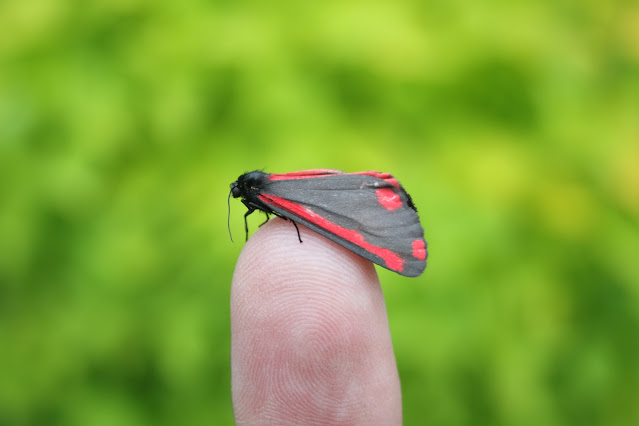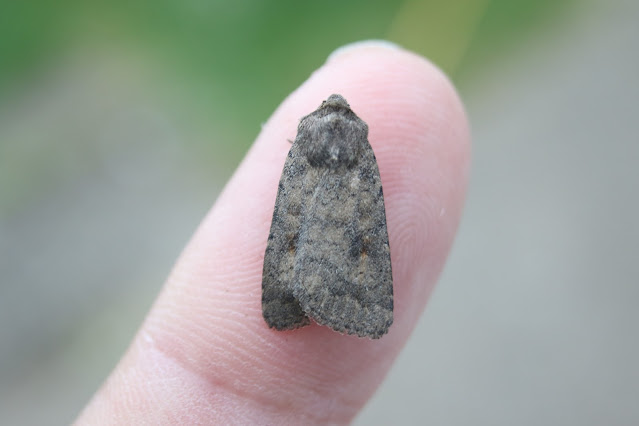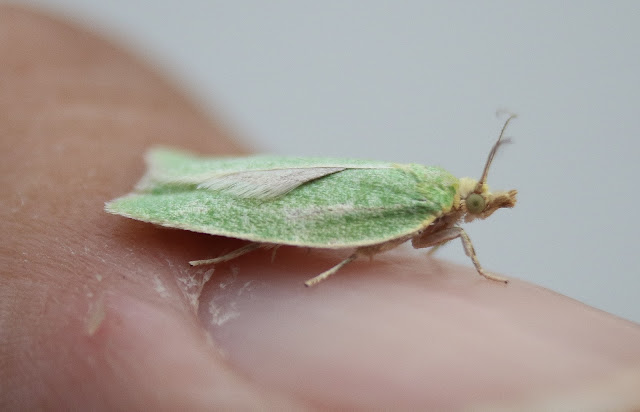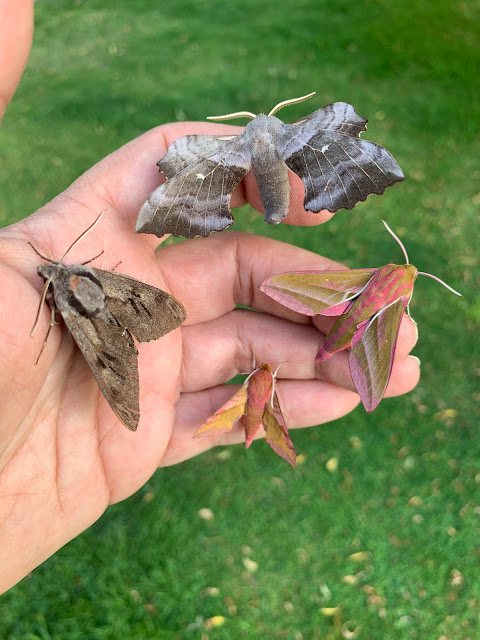34 species of moth last night in the garden, so for the first time this year there are more species of moths than birds in the garden. The moth year list is now on 141. The weather is set to improve further with night temperatures around 15 C so could be an exciting week ahead. Stuck on 587 moth species for the garden list with only a couple of new ones so far this year. Hoping we get over the 600 species (verified ones that stick as we lost quite a few after the verification process last year) mark this year.
A few highlights from this week and new for years below:
Female Ghost Moth- don't get many of these here
Cabbage Moth- not particularly common here either
Cinnabar - NFY
Getting quite a few Marbled Minor agg. which get a bit neglected as the complex can't be identified to species on sight. However this one stood out as being a nice brick red colour so a good excuse to feature one of these really smart moths (what ever species they are) on this blog. It's tempting to think this could be a Rufous Minor.
Brown Rustic (above) and Mottled Rustic (below) - I think
Green Oak Tortrix- a new for year and possible migrant although they are very common in oak woodland locally, also had a Silver-Y last night
Probably Buff Long-horn, Nematopogon metaxella with the reticulated forewing and rounded apex, although could be a gen den job as swammerdamella is also present locally. I should have checked the face which is white is metaxella and buff in other species. I presume this is a male with the antennae looking more like three times the length of the forewing (in females it is twice as long as the forewing).
I originally presumed a Cinerous Groundling, Bryotropha terrella as that is the default groundling here but it looks too dark and is possibly Pointed Groundling Scrobipalpa acuminatella. Seems to show a few features such as indistinct markings, the three spots on the middle wing with one close to the dorsum although there is not much hint of a pale cross band starting at the tornus which would be more typical.
Peppered Moth
Pine, Small Elephant, Elephant and Poplar Hawkmoths
A close up comparison of Small Elephant and Elephant
Meanwhile elsewhere at the Old Vic we are still doing our best to incubate the geese eggs. We are already down to six out of twelve with six either not fertilised or died following the candelling results this week. The image above shows a developing embryo with veining which is what we are looking for and the below shows a dead or unfertilised egg with no veining and a mainly clear egg white. It's important to move the dead eggs out of the incubator to contain any cross infection.















No comments:
Post a Comment